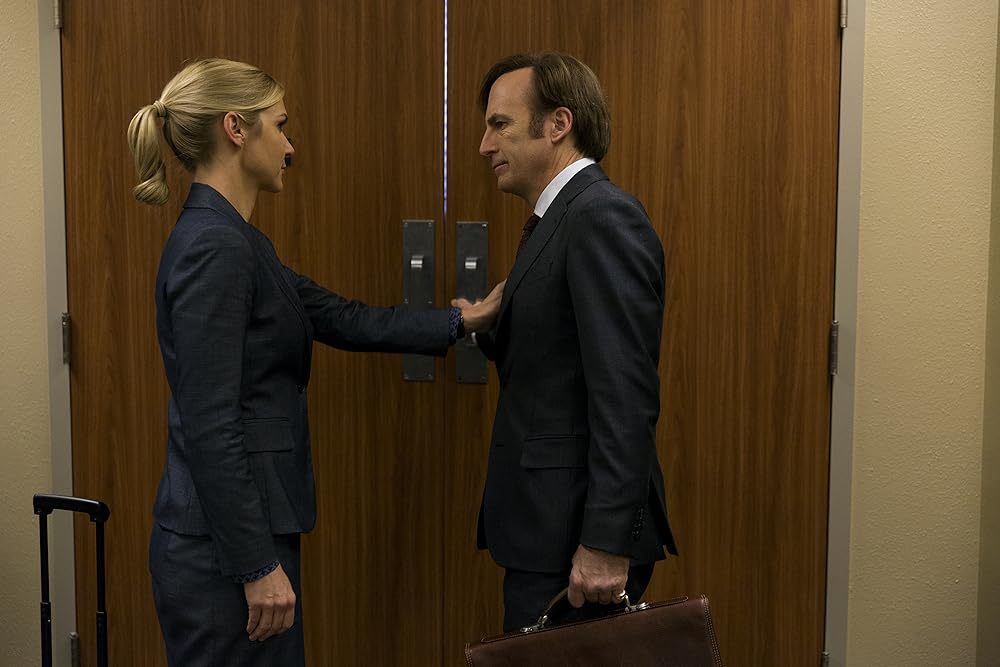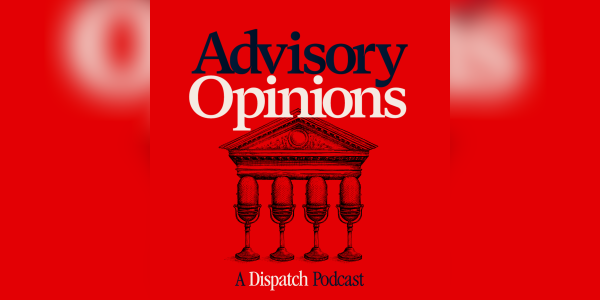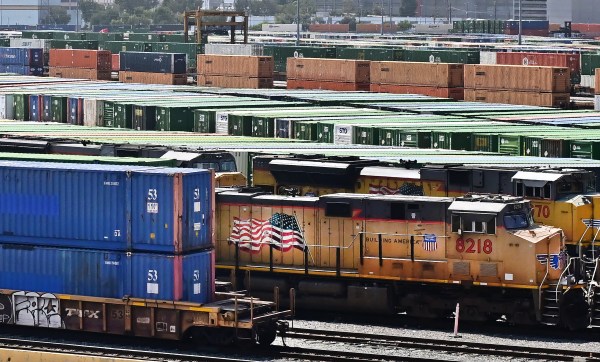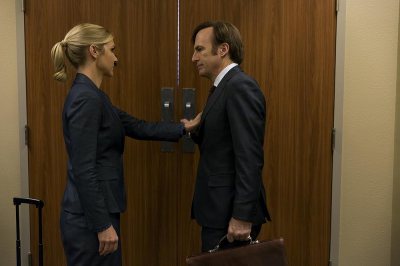Among the many winners of this week’s Emmy Awards—which gave Elton John the “E” in his EGOT and racked up accolades for Succession and The Bear—one show earned a more dubious distinction. Better Call Saul, Vince Gilligan’s Breaking Bad spinoff starring Bob Odenkirk, wrapped its six-season run with a combined total of 53 nominations and zero wins. That’s a new record for most Emmy losses by any single TV show. For those of us who have admired Better Call Saul from the get-go, this was no mere snub but a grave error of judgment—or, in the words of the show’s own Chuck McGill, “a sick joke!”
In a strange way, though, Better Call Saul’s losing streak is fitting for a show about frustrated ambitions and sibling rivalry. When it premiered in 2015, Better Call Saul was riding high on the success of Breaking Bad, which grew from a modest cable hit to an awards juggernaut. Better Call Saul had higher expectations and more to prove from the start. Why was showrunner Gilligan returning to the well to delve into the backstory of a comedic side character? Could the misadventures of a scummy lawyer really rival Walter White’s dramatic transformation into a druglord?
To judge by ratings and awards, the answer was no: Better Call Saul never dominated the zeitgeist like its predecessor. But for those of us in it for the long haul, it was a masterpiece that surpassed its inspiration. Better Call Saul is a slower burn than Breaking Bad, with fewer grisly setpieces and show-stopping cliffhangers. It is also, not incidentally, a deeper show: more patient, more mature, and eventually, more tragic.
Breaking Bad began with a clear end point in sight. Walter White would transform from Mr. Chips to Scarface, an arc that was artfully traced but had moments of cartoonish villainy or fan-serving spectacle. Jimmy McGill’s transformation into Saul Goodman was more of a zigzag, with seemingly lower stakes. In the early seasons of Better Call Saul, Jimmy was a relatable screw-up trying to do better, an ex-con pursuing the law to earn the respect of his disapproving brother. But the push and pull of Jimmy’s impulses—his genuine desire to go clean coexisting with a constant reversion to his slippery old ways—provided the show with a livewire tension from the start, even as the stakes gradually mounted.
To the writers’ credit, Better Call Saul never let Jimmy, or any of its leads, off the hook. No major character was morally pure or entirely irredeemable. Kim Wexler, Jimmy’s partner in law and in love, began the show as Jimmy’s straight-shooting counterpoint before becoming his worst enabler. Their relationship—masterfully played by Odenkirk and Rhea Seehorn, the show’s most egregious Emmy snubs—developed into a portrait of toxic codependency that was nonetheless one of the most believable romances on television.
In a similar progression, Breaking Bad fan favorite Mike Ehrmantraut (Jonathan Banks) earns immense sympathy early in Saul as we learn how this crooked ex-cop seeks to atone for his role in his son’s death. But the show never lets us forget the brutal reality of Mike’s trade. Where the Mike of Breaking Bad dispatches anonymous heavies with cool competence, Better Call Saul lingers on the soul-crushing realities of his job, showing viewers how his callousness was forged.
By contrast, Chuck McGill (Michael McKean) and Howard Hamlin (Patrick Fabian) were legally clean but easy to hate in the first few seasons. Jimmy’s self-righteous older brother and his slick law partner, respectively, both conspired to thwart his rise, but each of Chuck’s warnings about Jimmy’s dishonesty was vindicated by events. Howard, meanwhile, evolved from a corporate sleazebag to an object of profound sympathy. Even in the last season, a simple scene like Howard toiling over his wife’s coffee was enough to reorient the viewer’s perspective, throwing doubt on our preconceived assumptions about his inner life.
Better Call Saul was at its best in such show-don’t-tell moments. No other series I know of so skillfully depicted how processes, routines, or repeated actions define character. Consider, for instance, the rise-and-grind montage showing Kim’s morning routine, or the extended sequence of Mike methodically dismantling his car in search of a tracker. These were virtuoso pieces of filmmaking which spoke volumes about their subjects with barely any dialogue. (Another favorite: our final glimpse of Gus Fring, an extended wine-tasting flirtation which quietly reveals the loneliness of the criminal life.)
Even apart from the rich characterization, Gilligan’s Albuquerque is one of the most fully realized settings in all of television. Like the Baltimore of The Wire, Better Call Saul’s ABQ offers a panoramic view of a singular American city and the ordinary people who inhabit it.
Has any other show paid so much attention to the realities of working life in America? In so many TV shows, the main characters barely seem to work; in Better Call Saul, that is sometimes all they can do. From Albuquerque’s immigrant-run taquerias to the gleaming offices of a corporate law firm, Better Call Saul moves confidently between blue-collar and white-collar America. And it builds much of its drama around its characters’ attempt to attain upper-middle-class respectability, no matter what corners they must cut.
It’s too much to say that Better Call Saul is a portrait of American class striving, or the American Dream and its discontents. The show is too interesting for such a reductive and didactic reading. But even those themes got a more authentic treatment in Better Call Saul than in trendier Emmy favorites like The White Lotus or Succession, which often feel more inspired by Twitter debates than real life.
What, then, was Better Call Saul about in the end? It was a twisted love story worthy of the best film noir, a fraternal tragedy brought to life by two erstwhile comedians, and a first-rate legal drama that seamlessly blended elements of the Western, crime thriller, and black comedy.
Above all, it was a study of personal change even more compelling and complex than Breaking Bad. If Walter White’s story showed how a decent person could embrace evil, Saul Goodman’s asked whether someone who had already “broken bad” could change course and find redemption—or whether he was incapable of change, bound to relapse to his worst impulses.
“There are no second acts in American lives,” goes the famous F. Scott Fitzgerald quote. Over its six seasons, Better Call Saul turned over that theme in all its implications and contradictions, never rewarding the audience with easy answers. Now that it’s over, I can only hope that Better Call Saul enjoys a second act with new audiences, long after the 2024 Emmy Awards are forgotten.






Please note that we at The Dispatch hold ourselves, our work, and our commenters to a higher standard than other places on the internet. We welcome comments that foster genuine debate or discussion—including comments critical of us or our work—but responses that include ad hominem attacks on fellow Dispatch members or are intended to stoke fear and anger may be moderated.
With your membership, you only have the ability to comment on The Morning Dispatch articles. Consider upgrading to join the conversation everywhere.